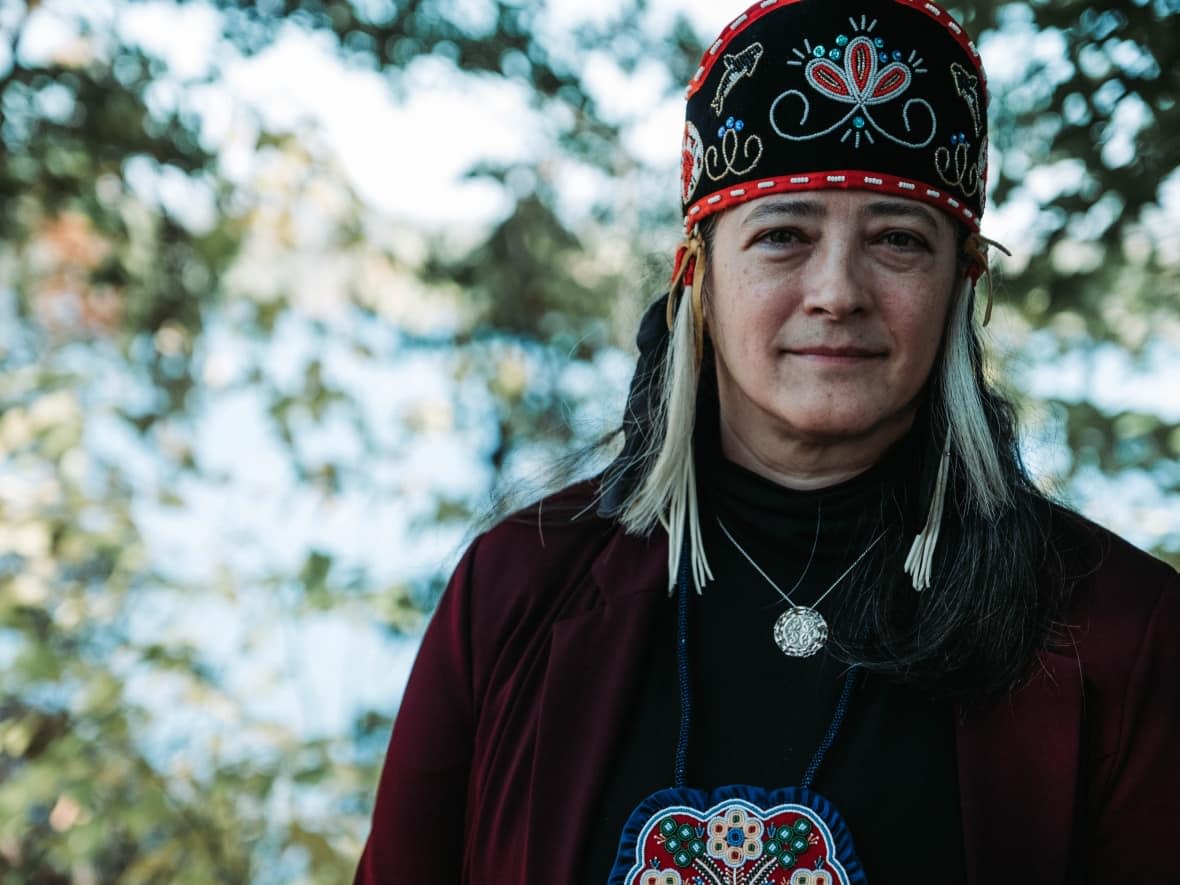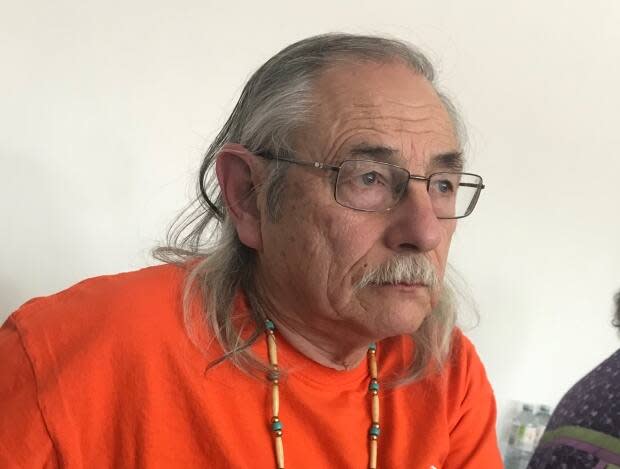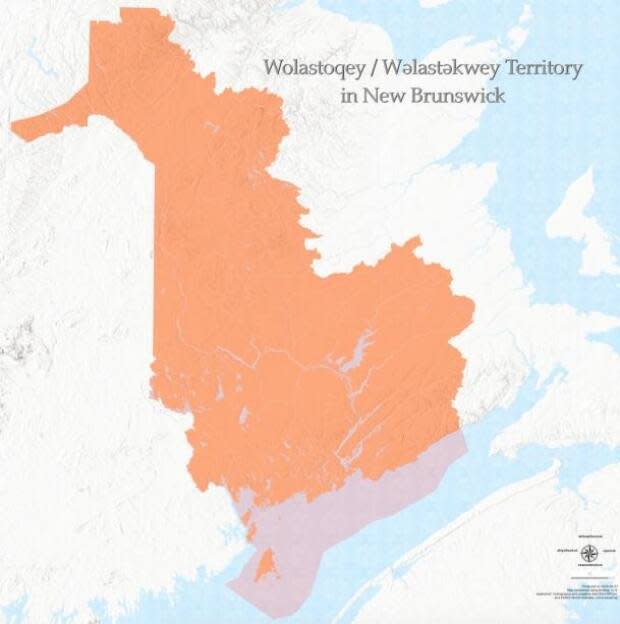Wolastoqiyik, Mi'kmaq say they're allies in land rights despite overlapping title claims

As several Indigenous nations in eastern Canada make overlapping claims to their traditional lands, they say the biggest obstacle won't be dealing with each other, but with the government of New Brunswick.
Last week, Mi'gmawe'l Tplu'taqnn Inc. (MTI), a Mi'kmaw rights collective in New Brunswick, released a map of its territory that included most of the province, and overlapped with territory claimed by the Wolastoqey Nation.
Chief Patricia Bernard of Madawaska Maliseet First Nation, part of the Wolastoqey Nation, said the maps show the two groups commonly shared some lands and that hard borders are a colonial concept.
"We are partners. We are allies in this. Our biggest challenge is going to have the province recognize it," she said.
She said the groups had two meetings already and the discussions will lead to a wampum agreement.
"Those are things that we're going to be working out. It will all be done in a friendly manner and it's a process to do this," said Bernard.
Hugh Akagi, chief of the Peskotomukati Nation at Skutik, near St. Andrews, N.B., said he has to take time to review the title claims of the Mi'kmaq and Wolastoqiyik. He added that pursuing title claims in the Canadian court system was like asking for sovereignty from one's oppressor.
"I think the first thing we have to do is remove the oppressor from the conversation and that means his law and his rules," said Akagi.

He said he is committed to maintaining good relations with the other Indigenous groups but would rather not have the governments in those discussions.
Aboriginal title is the legal right of Indigenous peoples to their traditional territories. Both the Wolastoqiyik and Mi'kmaq say those rights were not extinguished when they signed the Peace and Friendship treaties in the 1700s.
The province of New Brunswick said by email that the entire province was under claim by different Indigenous groups and it had received notice of MTI's claim.
"The province will address the Mi'gmaq's position in due course and as part of that process must consider how it implicates the current claim by the Wolastoqey to land that is in the Mi'gmaq map area," said provincial spokesperson David Kelly.

Crown-Indigenous Relations and Northern Affairs Canada said a tripartite framework was signed in 2017 with MTI, the government of Canada and the province of New Brunswick, which set out priority discussions including on Aboriginal title.
It said discussions of title were ongoing with Elsipogtog First Nation and the Peskotomuhkati Nation at Skutik, while the Wolastoqey Nation is pursuing title through the courts.
"Consistent with the principle of self-determination, matters concerning overlapping claims or assertions of Aboriginal rights and title by neighbouring nations are best addressed through discussions between the nations," said Randy Legault-Rankin, a spokesperson for CIRNAC, by email.
Building on Elsipogtog claim
Elsipogtog First Nation filed for Aboriginal title in 2016, laying claim to the Mi'kmaw traditional territory of Siknikt, on behalf of the Mi'kmaw Nation.

In 2019, the community signed a memorandum of understanding with the Government of Canada. Elsipogtog's lawyer Bruce McIvor said discussions are going well between all parties except for the provincial government.
"The province has declined to come to the table so far and participate in meaningful discussion," said McIvor, a partner at First Peoples Law.
McIvor said his clients and MTI have a shared goal of securing title for the entire Mi'kmaw Nation and that the map "builds on the good work that Elsipogtog has done on this."
"It doesn't go as far as Elsipogtog did in filing a title claim in 2016 but it's consistent with the title claim that was filed and it's good to see MTI taking a more assertive position on these important issues," said McIvor.

Eel Ground First Nation Chief George Ginnish said the map was released to push the province to the table. MTI represents his community and seven others in the title discussions.
Ginnish said he hopes the title claims can bring economic stability to the nine Mi'kmaw communities.
"How do we make life good, especially for our children, so that they feel that the world is a good place, that there's opportunity for them? You know, that's what we want to do," said Ginnish.
He said all the Indigenous groups will work together on the file but it may take some time to determine land boundaries.


